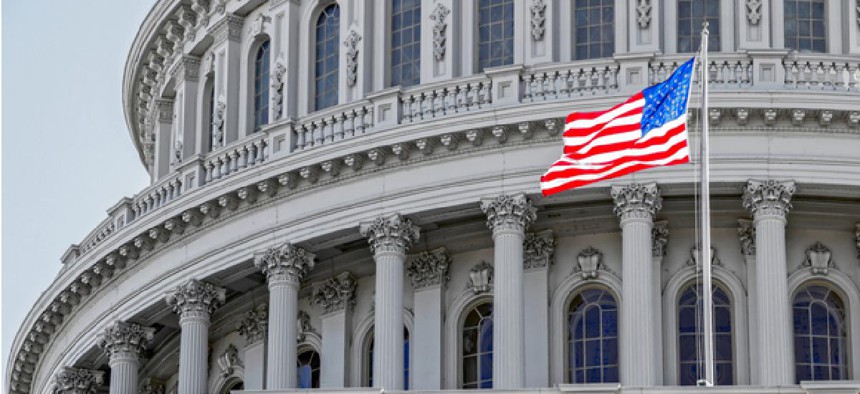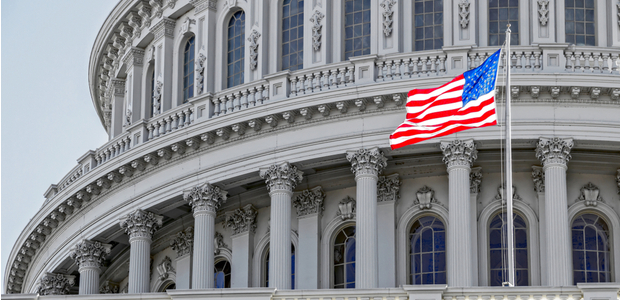Advancing agency priorities in a divided Congress

While a divided Congress might appear to be a recipe for inactivity, there are bipartisan agency priorities that could get attention in the near term worth focusing on.

With the House and Senate controlled by separate parties and election 2020 looming on the horizon, it may be tempting for agency leaders to think that little can be accomplished over the next two years. New committee chairs will mean shifts in agenda and new scrutiny on certain initiatives. You may also see midterm appointee turnover within your department—or ongoing vacancies in political appointee roles.
Some might suggest taking a "wait and see" approach on priority initiatives given current uncertainty, but we've identified key domains that remain ripe for immediate advancement.
Three ways to position for a high-impact 2019
Near-term progress on IT modernization initiatives requires an understanding of how they align with the agendas of the individuals assuming congressional leadership roles in 2019 (or in the case of agency-specific changes, how they align to the agendas of new political appointees). While support for this clearly needed work is unlikely to diminish as power changes hands, we should expect to see new preferences for how exactly it should be carried out. Our experience serving in and partnering with government tells us that placing an emphasis on the following will allow agencies to strengthen their position even in uncertain times.
1. Do your homework on (and for) incoming leadership. Look at what legislation new committee leaders have put their weight behind in the past for clues on what they'll prioritize or scrutinize in 2019. For ranking members who are becoming chairs, consider what they were and were not willing to compromise on when they were in the minority. Gathering this background and building an evidence-based business case for your agenda will help you anticipate questions and sustain momentum in transition. (More advice on this point here).
2. Be proactive about building relationships immediately. Don't wait for formal milestones to build good faith with new congressional members and their staffs. Reach out for informal conversations now, and there will be fewer surprises down the line when it comes to appropriations, oversight and major changes in direction. From what we've seen, agency leaders who get a head start on building rapport with their elected counterparts have a far easier time advancing their initiatives, even when there's disagreement in approach.
3. Energize your people. You may encounter downcast attitudes as employees wonder what's possible when everything might change in two years' time. Energize your workforce with a plan for pressing forward on priorities that benefit all -- one that's backed by data insights and, more culturally important, employee feedback. Now more than ever, leaders must actively solicit improvement ideas from personnel who are eager to be at the table and then communicate progress (and any setbacks) regularly with staff -- for utmost transparency and engagement in an otherwise uncertain time.
Push forward on programs with bipartisan support
No matter who has the majority, certain mission-critical areas enjoy enough long-running bipartisan support to progress in the near term with careful effort. It should be no surprise that each of the realms we outline below are related to modernizing government IT systems and embracing emerging technologies -- as foundations of efficient service and governance, success on these points will have broad and enduring benefits for all parties involved, including, most importantly, the American public.
Modernizing legacy IT systems. Almost 80 percent of agency IT budgets goes to maintaining outdated systems that no longer support organizational needs. Whether it's a move to the cloud or digitizing paper-based processes, CIOs and program leaders must demolish silos, skill up their staffs and unite to make service and mission the raison d'être of modernized IT. A great example is the Department of Defense's cloud solution for voting from abroad. Military service members, their families and citizens around the world can now navigate absentee voting in federal elections through FVAP.gov -- securely and based on the laws of their resident states.
Enabling analytics for evidence-based decision-making. An intensifying emphasis on meaningful program evaluation makes modern analytics capabilities a necessity. Agencies must go beyond collecting data and acquire the tools and talent necessary to leverage it for evidence-based decision-making. The Department of Energy, for example, is raising the bar with an analytics platform that helps it evaluate the impacts of its Advanced Research Projects Agency's (ARPA-E) investments in cutting edge energy projects.
Improving customer experience. As long as federal services score behind every other industry, improving CX will remain a priority. Converging demand for IT modernization and data-backed evaluation creates an unprecedented opportunity to rebuild government web portals based on citizen needs rather than agency structures. Head to Recreation.gov for a strong and recent example of how agencies are rethinking the citizen's experience at the digital front door.
Strengthening enterprise cybersecurity. To protect the mission, security must be standardized across programs and baked into new IT systems from day one. As federal government cybersecurity incidents rise in frequency, an intensifying global cybersecurity workforce shortage makes it ever harder to retain talented cyber teams. Agencies investing more in IT modernization see fewer breaches than those spending more on maintaining legacy systems, and modern cybersecurity solutions like those provided by the Department of Homeland Security's Continuous Diagnostics and Mitigation program can automate standard processes, freeing cyber experts to focus on more complex tasks.
The modernization of government through technology will remain a necessity long into the future, even as political winds continue to oscillate. As you shepherd your initiatives through uncertain territory, reach out to colleagues at programs and agencies that have succeeded in laying the technological foundations for mission advancement. You may discover strategies and approaches, case studies and even platforms and systems that you can leverage to support your own mission.
Consider the ARPA-E effort we mentioned above. This new analytics platform automatically gathers and analyzes data on the impact of close to $350 million in annual energy innovation investments. It's a prime example of a capability that saves time and resources on data collection and evaluation, better informs agency decision-making and improves ROI for the American people.


